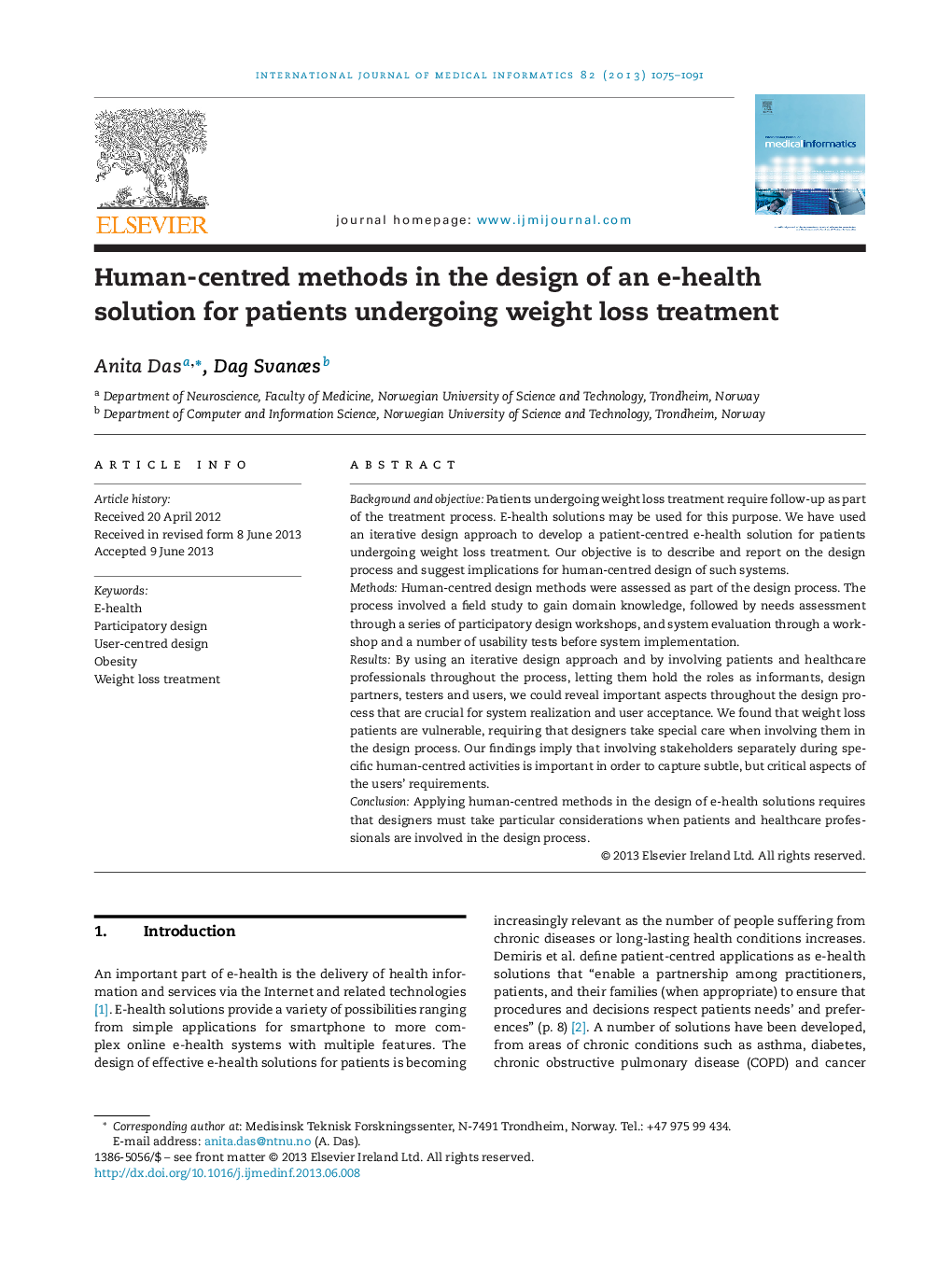| Article ID | Journal | Published Year | Pages | File Type |
|---|---|---|---|---|
| 516554 | International Journal of Medical Informatics | 2013 | 17 Pages |
•Human centred approaches are useful when developing patient-centred e-health solutions for weight-loss patients.•Separating various user groups during design activities is important in order to get insight to their unique needs, perspectives and requirements.•Involving patients in the design process requires particular considerations regarding personal experiences and vulnerabilities.
Background and objectivePatients undergoing weight loss treatment require follow-up as part of the treatment process. E-health solutions may be used for this purpose. We have used an iterative design approach to develop a patient-centred e-health solution for patients undergoing weight loss treatment. Our objective is to describe and report on the design process and suggest implications for human-centred design of such systems.MethodsHuman-centred design methods were assessed as part of the design process. The process involved a field study to gain domain knowledge, followed by needs assessment through a series of participatory design workshops, and system evaluation through a workshop and a number of usability tests before system implementation.ResultsBy using an iterative design approach and by involving patients and healthcare professionals throughout the process, letting them hold the roles as informants, design partners, testers and users, we could reveal important aspects throughout the design process that are crucial for system realization and user acceptance. We found that weight loss patients are vulnerable, requiring that designers take special care when involving them in the design process. Our findings imply that involving stakeholders separately during specific human-centred activities is important in order to capture subtle, but critical aspects of the users’ requirements.ConclusionApplying human-centred methods in the design of e-health solutions requires that designers must take particular considerations when patients and healthcare professionals are involved in the design process.
